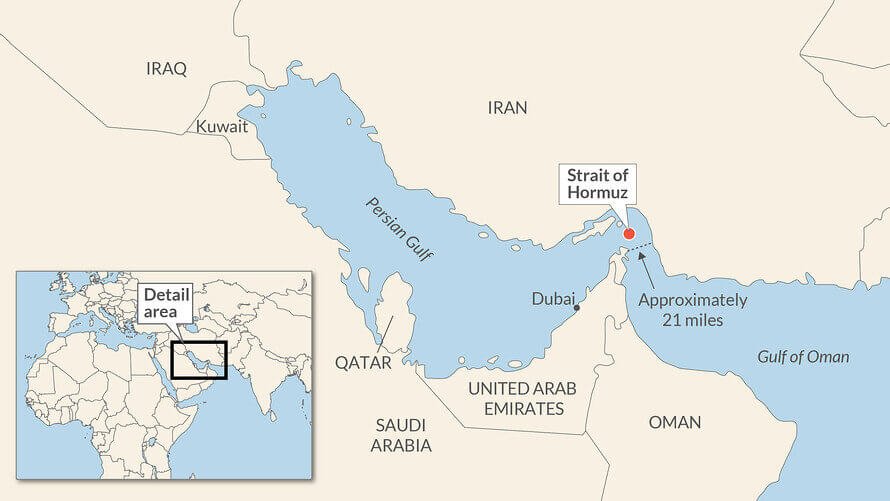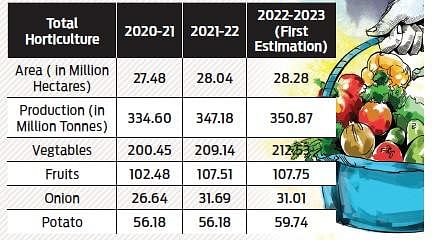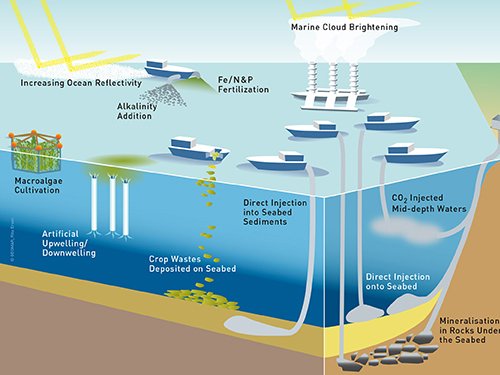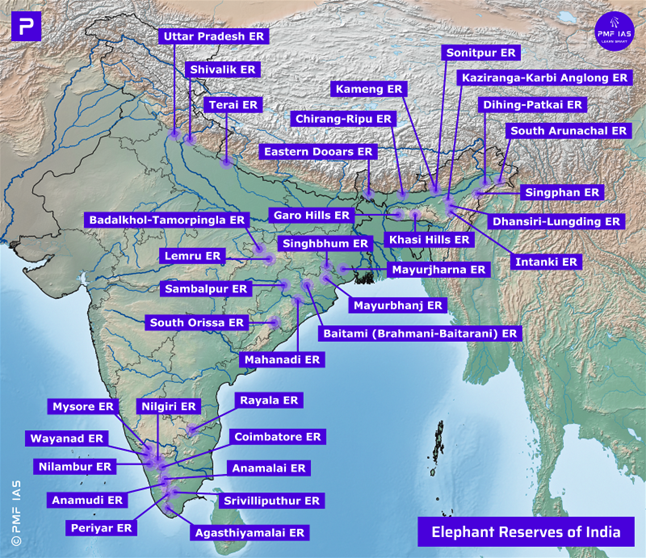
Piracy in Middle East | Anti-Piracy Act, 2022
Subscribers of "Current Affairs" course can Download Daily Current Affairs in PDF/DOC
Subscribe to Never Miss an Important Update! Assured Discounts on New Products!
Must Join PMF IAS Telegram Channel & PMF IAS History Telegram Channel
- Context (TH): The Navy Chief said the new Maritime Antipiracy Act, 2022, has been a “great enabler” and is one reason for the Indian Navy’s success during Operation Sankalp.
- The Anti-Maritime Piracy Act provides an effective legal instrument to combat Maritime Piracy.
- Recently, Operation Sankalp completed 100 days in the Gulf of Aden, the North Arabian Sea and the East Coast of Somalia.
Need for the Act
- To provide prevention of maritime piracy and prosecution of persons for such piracy-related crimes.
- The security of sea lanes of communication is critical as more than 90% of India’s trade takes place by sea routes, and more than 80% of the country’s hydrocarbon requirements are sea-borne.
- India’s sovereignty extends to its territorial waters (up to 12 nautical miles from the coastline), which implies that all domestic laws of the country apply in this zone.
- However, prosecuting pirates who are apprehended beyond these territorial waters was a challenge because India did not have a domestic law on maritime piracy.
- Certain acts of piracy in the EEZ were covered under the Suppression of Unlawful Acts Against Safety of Maritime Navigation and Fixed Platforms on Continental Shelf Act (SUA Act), 2002.
- However, the SUA Act of 2002 did not cover all acts of piracy as defined under UNCLOS.
- The SUA Act, 2002, does not cover theft that does not endanger the safety of a ship in the EEZ. However, it would qualify as piracy under UNCLOS and this Act.
Provisions of the Act
Definition of Piracy
- Any illegal act of violence, detention, or destruction committed against a ship, aircraft, person or property by the crew or passengers of a private ship or aircraft for private purposes.
- Such acts may be carried out on the high seas (beyond India’s Exclusive Economic Zone) or anywhere outside India’s jurisdiction.
- Inciting or intentionally facilitating such acts would also qualify as piracy.
- It includes any other act that is considered piratical under international law.
- Piracy also includes voluntary participation in the operations of a pirate ship or aircraft used for piracy.
Definition of ship
- Defines ship as (i) vessel or watercraft, and (ii) seaplanes and other aircraft capable of being used as means of transportation in water.
Applicability of the Bill
- The Bill will apply to the high seas, which include the EEZ and all waters beyond the jurisdiction of any state (country other than India).
Penalties
- An act of piracy will be punishable with:
- Imprisonment for life; or
- Death, if the act of piracy causes or attempts to cause death.
- An attempt to commit, aid, support, or counsel an act of piracy will be punishable with up to 14 years of imprisonment and a fine.
- Participating in, organising, or directing others to participate in an act of piracy is also punishable by up to 14 years of imprisonment and a fine.
- Offences will be considered extraditable. This means that the accused can be transferred to any country for prosecution, with India having signed an extradition treaty.
- In the absence of such treaties, offences will be extraditable on the basis of reciprocity between the countries.
Jurisdiction of the Courts
- The GoI, in consultation with the Chief Justice of the concerned High Court, may notify Sessions Courts as the Designated Courts under this Bill.
- The Designated Court will try offences committed by:
- A person in the custody of the Indian Navy or Coast Guard, regardless of his nationality.
- A citizen of India, a resident foreign national in India, or a stateless person.
- The Court will not have jurisdiction over offences committed on a foreign ship unless an intervention is requested by:
- The country of origin of the ship.
- The ship-owner.
- Any other person on the ship.
- Warships and government-owned ships employed for non-commercial purposes will not be under the jurisdiction of the Court.
Power to carry out arrest and seizure on grounds of suspicion
- Only authorised personnel may carry out arrest and seizure.
- These personnel include:
- Officers and sailors assigned to warships or military aircraft of the Indian Navy or
- Officers and enrolled persons of the Coast Guard,
- Officers of the central or state government are authorised to operate any ship or aircraft.
- It adds that Authorised Personnel may carry out arrest and seizure on the grounds of suspicion.
Critical Challenges in the Bill
Death Penalty
- Under the Bill, if a person, while committing an act of piracy, causes or seeks to cause death, he will be punished with death. This implies a mandatory death penalty for such offences.
S.C on mandatory Death Penalty
- Provisions that impose a mandatory death penalty are arbitrary and unfair as they violate Articles 14 and 21 of the IC.
- Such Provisions fail to take into account the facts and circumstances of each case and deny courts their right to exercise their discretion on whether to impose a death sentence.
Instances where the Court has struck down such provisions
- Section 303, Indian Penal Code, 1860, which provided for mandatory death sentence for offenders who murdered while serving a life sentence, and
- Section 27(3), Arms Act, 1959, which provided for a mandatory death penalty for the usage of prohibited arms resulting in the death of a person.
Laws passed by Parliament that provide for mandatory death penalty
- Scheduled Castes and Scheduled Tribes (Prevention of Atrocities) Act, 1989 (SC/ST Act).
- SUA, Act, 2002.
- The Anti-Hijacking Act, 2016.
Specific actions may fall under different offences and have differing penalties
- Certain circumstances may overlap; it is unclear how the punishment would be determined in such cases.
- It provides for imprisonment of up to 14 years, along with a fine, if a person aids, assists, participates, organises, or directs another person to participate in an act of piracy.
- Committing an act of piracy (which includes voluntarily participating in the operation of a pirate ship or aircraft) is punishable by life imprisonment.
- ‘Committing an act of piracy’ and ‘Participating in an act of piracy’ could have the same interpretation.
- Assisting and aiding piracy may be similar to intentionally facilitating piracy or voluntarily participating in the operation of a pirate ship.
Geographical applicability of the Act
- The Act will apply to all parts of the sea adjacent to and beyond the limits of India’s Exclusive Economic Zone (EEZ), i.e., beyond 200 nautical miles from the coastline.
- The question is whether the Act should also cover the EEZ, that is, the area between 12 nautical miles and 200 nautical miles (from the coastline of India).
- UNCLOS states that provisions relating to piracy should apply to both the EEZ and the high seas.
- The geographic scope of the Piracy Bill, 2012 (which has lapsed) also extended to the EEZ.
Operation Sankalp
- The Indian Navy launched ‘Operation Sankalp’ in the Persian Gulf and the Gulf of Oman to ensure the safety and security of the Indian vessels transiting through the Strait of Hormuz.
- The Indian Navy commenced Maritime Security Operations after the attacks on merchant ships in the Gulf of Oman in June 2019.
- Indian Navy Ships INS Chennai and INS Sunayna were deployed to undertake maritime security operations in the Gulf of Oman and the Gulf of Persia.
- Aerial surveillance of Indian Naval aircraft is also being carried out in the region.
- The Information Fusion Center-Indian Ocean Region also closely monitors ship motion in the Gulf region.
Persian Gulf
Gulf of Oman
Strait of Hormuz
|
- Under Op Sankalp, the Indian Navy also conducts maritime security operations in three areas, viz the Gulf of Aden and adjoining areas, the Arabian Sea, and off the East Coast of Somalia.
Gulf of Aden
|
United Nations Convention on the Law of the Sea (UNCLOS)
- It replaced the Quad Treaty 1958 Convention on the High Seas.
- The UNCLOS, 1982, is an international agreement that establishes the legal framework for marine and maritime activities.
- It is also known as the Law of the Sea.
- India signed the Convention in 1982 and ratified that in 1995.
- The non-parties to UNCLOS are- The United States, Colombia, Israel, Peru, Turkey and Venezuela.
- It defines the rights and responsibilities of nations concerning the use of the world’s oceans.
- It proposes the notion that all ocean and sea problems are closely interrelated and need to be addressed as a whole.
- It is the only international convention that stipulates a framework for state jurisdiction in maritime spaces and provides different legal statuses to maritime zones.
Freedom of Navigation Operations (FONOPS)
USA’s Arguments for Conducting FONOPs
|
Different Maritime Zones under UNCLOS
- It divides marine areas into five main zones, namely-
- Internal Waters,
- Territorial Sea,
- Contiguous Zone,
- Exclusive Economic Zone (EEZ) and
- The High Seas.
Baseline
- It is the low-water line along the coast, which is officially recognised by the coastal state.
Internal Waters
- Internal waters are waters on the landward side of the baseline from which the breadth of the territorial sea is measured.
- Each coastal state has full sovereignty over its internal waters, as does its land territory.
- Examples of internal waters include bays, ports, inlets, rivers, and even lakes connected to the sea.
- There is no right to innocent passage through internal waters.
- The innocent passage refers to passage through waters that are not prejudicial to peace and security. However, nations have the right to suspend it.

Archipelagic waters
- If the country is an archipelago or has an archipelago under it, a baseline is drawn between the outermost points of the islands, provided that these islands are close to each other.
- All water inside this is called Archipelagic Water.
- The state has full sovereignty over these waters, and foreign vessels are allowed to pass innocently through archipelagic waters.

Territorial Sea
- The territorial sea extends seaward up to 12 nautical miles (nm) from its baselines.
- A nautical mile is based on the circumference of the earth and is equal to one minute of latitude.
- It is slightly more than a land-measured mile (1 nautical mile = 1.1508 land miles or 1.85 km).
- The coastal states have sovereignty and jurisdiction over the territorial sea.
- These rights extend to the surface, seabed, subsoil, and even airspace.
- But the coastal states’ rights are limited by the innocent passage through the territorial sea.
Contiguous Zone
- The contiguous zone extends seaward up to 24 nm from its baselines.
- It is an intermediary zone between the territorial sea and the high seas.
- The coastal state has the right to both prevent and punish infringement of fiscal, immigration, sanitary, and customs laws within its territory and territorial sea.
- The contiguous zone only gives jurisdiction to a state on the ocean’s surface and floor and does not provide air and space rights.
Exclusive Economic Zone (EEZ)
- Each coastal State may claim an EEZ beyond and adjacent to its territorial sea that extends seaward up to 200 nm from its baselines.
- Within its EEZ, a coastal state has:
- Sovereign rights to explore, exploit, conserve, and manage natural resources, whether living or non-living, of the seabed and subsoil.
- Rights to carry out activities like the production of energy from the water, currents and wind.
- Unlike the territorial sea and the contiguous zone, the EEZ only allows for the resource mentioned earlier rights.
- It does not give a coastal state the right to prohibit or limit freedom of navigation or overflight, subject to minimal exceptions.
High Seas
- The ocean surface and the water column beyond the EEZ are referred to as the high seas.
- It is considered as “the common heritage of all mankind” and is beyond any national jurisdiction.
- States can conduct activities in these areas for peaceful purposes, such as transit, marine science, and undersea exploration.






![PMF IAS Environment for UPSC 2022-23 [paperback] PMF IAS [Nov 30, 2021]…](https://pmfias.b-cdn.net/wp-content/uploads/2024/04/pmfiasenvironmentforupsc2022-23paperbackpmfiasnov302021.jpg)













